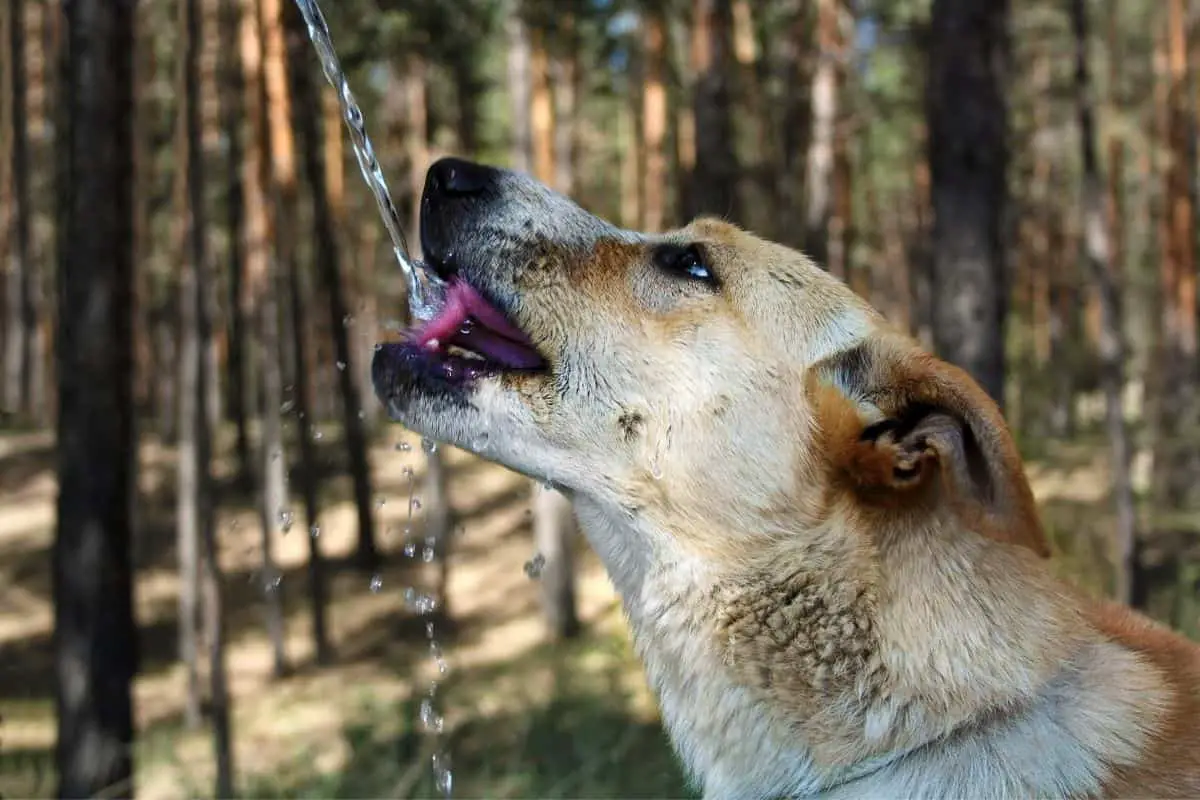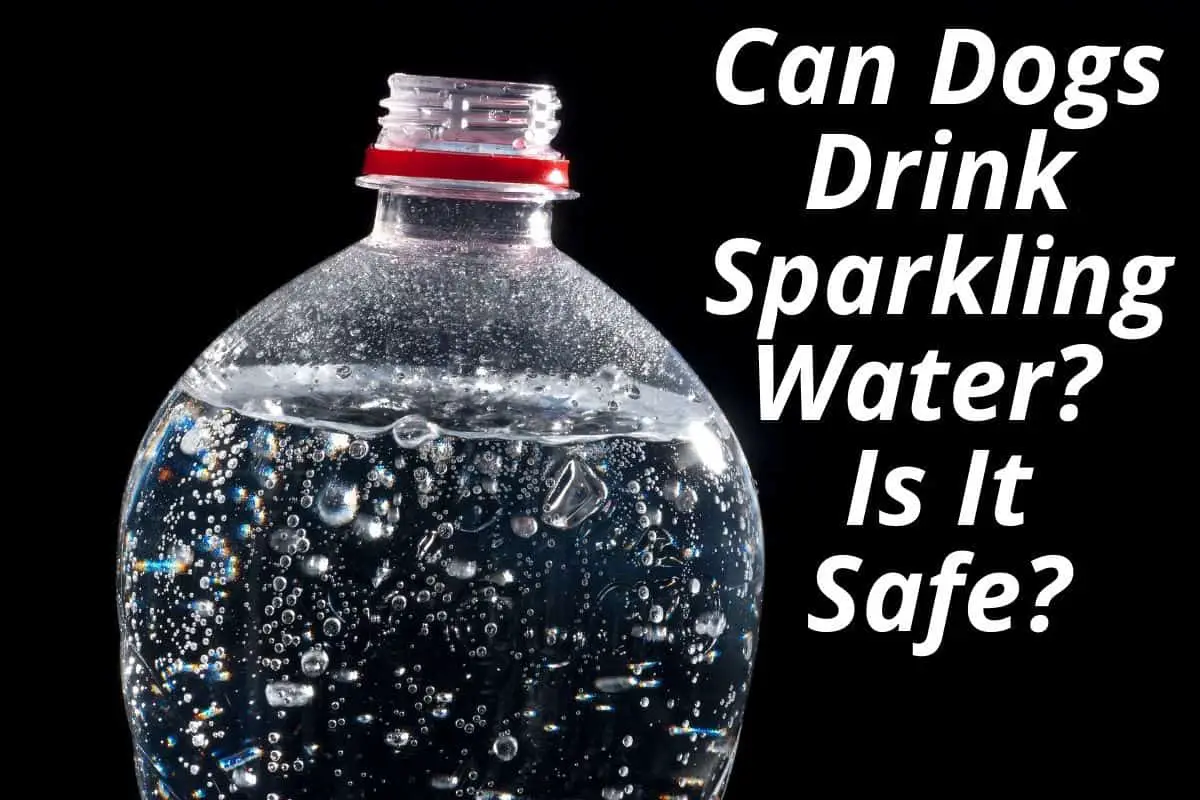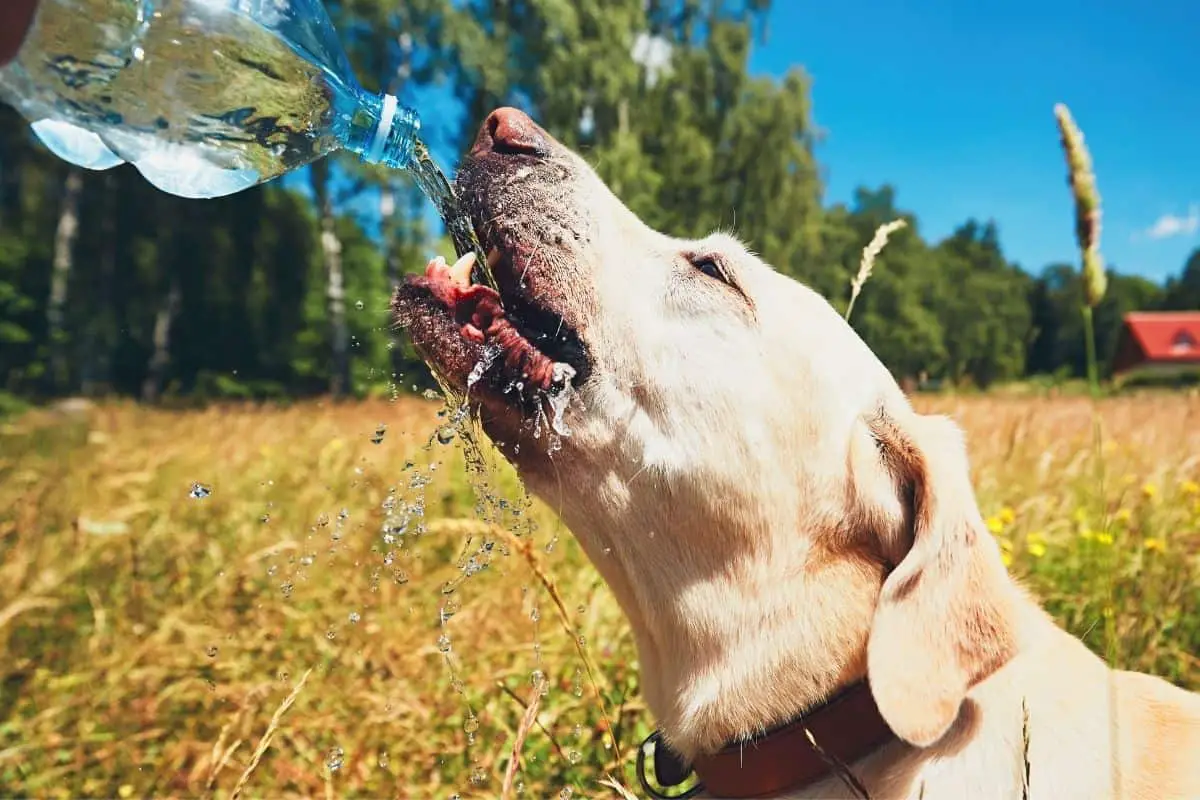This post contains affiliate links.
Like humans, dogs’ bodies are made of around 80% water. To maintain this healthy balance, dogs need to drink plenty of fresh, clean water throughout the day. Without water, dogs could experience extreme discomfort, and without intervention, they may even die.
Dogs can survive for up to 3 days without water. However, it would be best if you never let your dog run out of water since dehydration can quickly result in death or permanent damage to your dog’s body.
So, let’s discuss exactly how long a dog can go without water. We’ll help you determine how much water your dog needs in a day, and we’ll also help you understand why it’s essential to keep your dog hydrated.
Table of Contents
How Long Can a Dog Survive Without Water?
All mammals need water to survive, and dogs are no exception to this rule. Like humans, dogs won’t last long if they don’t have access to fresh, clean water at all times of the day.
Dogs can usually survive without water for 2–3 days, but their health will start to decrease after only a few hours without water. Like humans, dogs begin to have digestive, neurological, muscular, and respiratory difficulties only hours after becoming dehydrated.
Dogs lose water throughout the day from panting, creating mucus, urinating, and defecating. They also lose a fair amount of water through evaporation from their paws. This moisture must be replaced for them to keep their bodies running healthily.
The amount of time a dog can go without water depends on its breed, the weather of the area it lives in, age, and current health. Still, vets report that most moderately active dogs living in a mild climate will survive for around 72 hours without water.
That doesn’t mean a dog should go without water for any amount of time, though. Like humans, dogs start to feel uncomfortable only hours after they become dehydrated, and the discomfort only increases the longer they go without liquids.
How Long Does It Take for a Dog To Get Dehydrated?
Dogs become dehydrated long before the 2-day mark of having no water.
Dogs start to feel the effects of dehydration within less than 24 hours of having no access to water. During 24 hours of no water, a dog will be noticeably uncomfortable. However, that doesn’t mean the dog won’t start to feel the effects of dehydration before then.
Like in humans, a dog’s dehydration is uncomfortable and unpleasant, even when it’s not an advanced case. So, withholding water from your dog for any amount of time will likely make it feel unhappy and unhealthy.
What Happens When Dogs Get Dehydrated?
Symptoms of dehydration get increasingly worse as your dog’s body dries out, and letting the dehydration get so bad that you notice your dog’s discomfort is never a good thing.
When dogs get dehydrated, they’ll gradually lose body moisture, oxygen in their bloodstream, muscle and brain function, and electrolytes and crucial minerals. If the water, electrolyte, and oxygen contents in their body get low enough, they’ll die.
So, let’s discuss the order in which each symptom of dehydration appears and talk about what happens inside a dog’s body when it doesn’t get enough water for an extended period.
Dogs Get Uncomfortable if They Don’t Drink for 24 Hours
Dogs will start to feel uncomfortable from dehydration after around 24 hours of no water. However, some dogs may begin to feel discomfort in less time if the climate is very hot and dry or if they’re very active.
During this stage of dehydration, your dog’s body will slowly start to shut down, causing fatigue, overheating, and nausea.
Your dog’s body will quickly lose all of its moisture, leading to a condition called xerostomia. Xerostomia is a condition in which a dog’s body dries out, resulting in a dry mouth, thick mucus, and dry or sunken eyes.
Since water also helps dogs stay cool, they’ll be noticeably hot. Your dog will likely start to pant excessively to try to regulate its body temperature, but without water, the panting will only exacerbate dehydration and xerostomia.
Dogs Become Weak After Going 25–48 Hours Without Water
After the first 24 hours of having no water, your dog will start to lose control over its body’s functions.
Letting your dog go more than a day without water will decrease its ability to circulate oxygen throughout its tissues. That’s because water thins out blood, helping the circulatory system deliver oxygen to your dog’s organs and muscles.
Without H20, a dog’s blood thickens and becomes less efficient, resulting in depleted muscles, organs, and nerves. Usually, you can see the effects of this in a dehydrated dog since most pups have trouble walking and become very lethargic when they don’t drink enough.
In addition, water contains essential minerals that dogs need to maintain their electrolyte balance. By 25 hours of having no water to drink, your dog has likely already eliminated many of these minerals. Without enough water to replenish them, your dog will start to feel dizzy and weak, and its heart may palpitate.
Dogs May Die After Going 48 or More Hours Without Water
Allowing your dog to go more than 48 hours without the proper hydration is incredibly dangerous, and without a visit to the vet, your dog has a high chance of dying.
At 48 hours, your dog has imbalanced electrolytes and is likely tired and uncomfortable. At this point, your dog may experience irreparable damage to its renal system, often resulting in kidney disease and permanent bladder issues.
With no water to help your dog circulate oxygen throughout their body, it’ll have decreased brain function, lack of muscle control, and digestive discomfort.
Your dog may also pass out or collapse, as its brain functions will have decreased significantly to the point where it can no longer walk.
According to Dr. Jerry Klein, the AKC’s chief veterinary officer, if your dog drinks a large amount of water at this phase, it’ll likely vomit it, causing more severe dehydration. So, the best treatment for dogs that have gone days without drinking any water is for them to receive IV fluids and tiny drops of water to rehydrate them gradually.
So, allowing your dog to go without liquids for even just one day could do permanent damage to their body. That’s why it’s crucial to ensure your pet always has access to water.
How To Recognize Dehydration in Dogs
Dehydration is never healthy, and knowing when your dog is dehydrated is crucial if you want to catch potentially severe health problems before they get worse.
Dehydrated dogs have dry noses, dry gums, sunken eyes, and thick mucus. They’re usually sluggish and don’t have much of an appetite. Left without water for long enough, they may lose consciousness or experience a seizure.
If you recognize these symptoms in your dog, give it water and encourage your dog to drink. If your dog refuses the water, you may need to inject a few tablespoons of water into its mouth with an oral syringe or a dropper.
Constantly monitor your dog when it’s dehydrated and ensure it drinks a moderate amount of water. If your furry friend is vomiting or has diarrhea, it may be time to call the veterinarian.
Some of the conditions that cause dehydration in dogs include diabetes, Cushing’s disease, cancer, food poisoning, kidney disorders, and liver disorders. So, identifying the cause of your dog’s dehydration can help you diagnose and treat a potentially life-threatening illness before it becomes fatal.
Provide Your Dog With Water Based on Its Body Size
Dogs should always have access to water, so you should keep their bowl topped up at all hours of the day.
According to celebrity dog trainer Cesar Milan, you should provide your dog with 8.5 to 17 ounces (55 to 110 mL) of water for every 10 pounds (1 kg) your dog weighs.
So, a 30 pounds (13.6 kg) dog would drink around 25.5 to 51 ounces (754 to 1508 mL) of water every day.
Still, these measurements represent the minimum amount of water that your dog will need in a day, so ensuring there’s always water out for your dog is still the best practice.
In addition, if it’s a hot day or your dog is very active, it might need more water. To prevent your dog’s water bowl from getting empty, you should make a routine of filling up your dog’s water bowl once or twice a day, depending on the water bowl’s size.
Can a Dog Go Without Water Overnight?
Many people with dogs or puppies take away the water bowl at night to keep their dogs from urinating while everyone else is sleeping. Although this practice will keep your dog’s bladder empty, it isn’t always the best practice.
Dogs can go without water overnight. However, if a dog is already potty trained, leaving water out at night is the best practice to ensure the dog has access to water whenever it needs it.
According to canine behavioral experts from Brown University, limiting a dog’s water intake at night is a good practice while potty training them. That’s because some dogs will drink excessive amounts of water out of boredom, which will make them have to urinate more frequently.
Letting your dog go overnight without water is fine as long as it has had access to a constant supply of water throughout the day.
However, some dogs may want to drink water on hot nights or after intense exercise. As long as you’re not potty training your dog, it’s better to let your dog stay hydrated.
Ultimately, dogs can go overnight without water, but you generally shouldn’t limit their water intake unless you need to regulate their urination schedule.
In addition, allowing your dog to drink water when it needs it is the best way to ensure your dog never gets dehydrated.
So, keep the bowl down whenever you can, and encourage your dog to drink as much as it wants. Doing so could stave off illness and discomfort.
How To Ensure Your Dog Gets Enough Water
If you don’t want your dog to get dehydrated, it’s crucial to ensure it always has fresh, clean water. However, there are some extra tips and tricks that many people use to ensure their dogs always stay healthy, happy, and hydrated.
Here are some tips to keep your dog from dehydrating:
- Leave your dog’s water bowl down at all times.
- Give active dogs extra water.
- Provide your dog with more water on hot days.
- Give your dog water when spending time outdoors.
- Take a water bowl and water with you when going on long walks with your dog.
- Give your dog ice cubes to snack on, or stick a couple in your dog’s bowl.
- Pour warm water on your dog’s dry food or give it wet food.
- Use an easy-to-clean ceramic or metal water bowl.
- Refresh the water at least once a day.
If you follow these tips, you can prevent dehydration in even the pickiest of dogs. So, never hesitate to give your dog more water than it needs.
Final Thoughts
Dogs can live up to 3 days without water, but they become dehydrated long before they experience fatality. Allowing your dog to become dehydrated is never a good thing, and it could damage your dog’s renal system permanently.
In addition, as dogs lose water, they lose body functions and experience almost unbearable discomfort, so ensuring that your dog always has plenty of water is the best practice.
Related Articles
- Can Dogs Drink Sparkling Water? (Is It Safe?)
- What Can Dogs Drink Besides Water? (We Ask the Experts)
- My Dog Drank Pool Water: Here’s What To Do About It
- Dog Water at Night – When To Cut Them Off
- Considering Forcing a Dog To Drink Water? (Read This First)
- Can a Dog Go 8 Hours Without Water?
- Can Dogs Drink Coconut Water? Let’s Find Out!
- Can Dogs Drink Distilled Water? Let’s Find Out
- How Long Can a Dog Go Without Eating? (We Ask the Experts)
Sources
- Cesar’s Way: Hydrate Your Hound For Health – Dog Hydration.
- WebMD Pets: Dig Always Thirsty? How Much Water is too Much?
- Well Pet: How Long Can a Dog Go Without Food and Water.
- Homes Alive: How Long Can a Dog Go Without Water?
- Animal Emergency Center Memphis: Dehydration in Dogs – Symptoms, Causes, and Treatments.
- Animal Food Planet: How Long Can Dogs Go Without Water? – All You Need To Know.
- American Kennel Club: Warning Signs of Dehydration in Dogs.
- Brown University: House Training Your Dog.
- Dr. Ron’s Animal Hospital Simi Valley: Tips To Treat Dehydration in Dogs from The Expert in Simi Valley.
Mrdogfood.com is a participant in the Amazon Services LLC Associates Program, an affiliate advertising program designed to provide a means for sites to earn advertising fees by advertising and linking to Amazon.com. We also participate in other affiliate programs which compensate us for referring traffic.




